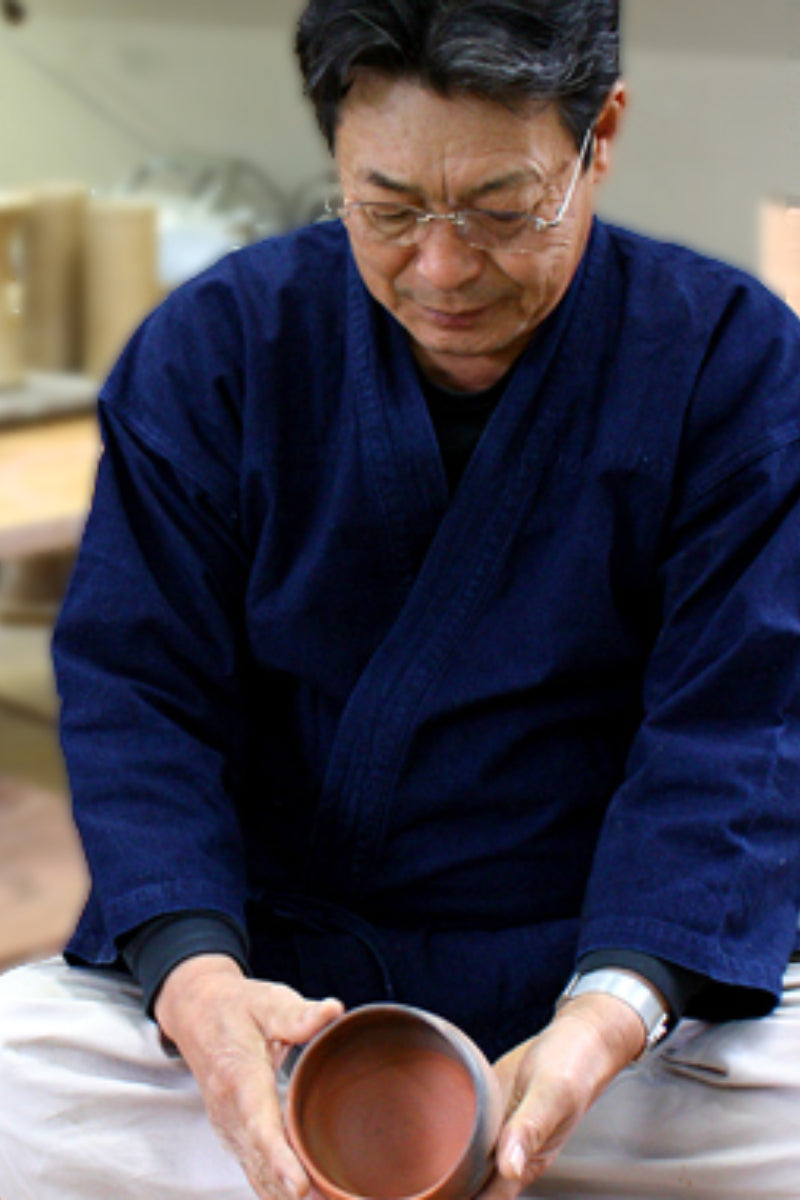Our Makers
The Everlasting Flame of Twilight Red - The Revival of Unka-yaki

The First Glow of Twilight Red: Koukoku Ohshima - Creator of Unka-yaki
Koukoku Ohshima, the innovator behind Unka-yaki, was born in Kariya, Ako City, Hyogo Prefecture, during the fourth year of the Bunsei era (1821). At the age of 28, Ohshima encountered Benjiro Sakune, a renowned Edo pottery master, during a visit to Ako. It is believed that Benjiro Sakune imparted to him the ceramic techniques of the Imado-yaki style.
With only two years of knowledge passed down to him, Ohshima embarked on a remarkable journey to develop a distinctive style, ultimately giving birth to "Unka-yaki." Through tireless self-study and dedication, he honed his craft. One of the most striking features of Unka-yaki is its breathtaking kiln-fired patterns, characterized by a white base adorned with mesmerizing orange and black hues, reminiscent of an burning cloud.
Although Ohshima created "Unka-yaki" five years after his encounter with Benjiro Sakune, he faced challenges in achieving his artistic vision. While we can't precisely discern Ohshima's ideal beauty, around the age of 57, his works began to exhibit the level of craftsmanship that satisfied his artistic ambitions. His talents received well-deserved recognition when he participated in the National Industrial Exhibition, where he was honored with the prestigious Hanamon Award for his innovative achievements.
Sadly, Koukoku Ohshima's technique was not passed down to his apprentices, and with his passing, this mesmerizing art form faded into obscurity.

The Twilight Red Chasers: Kunihiko Nagamune and Yoshiko Momoi
The revival of the Unka-yaki technique began in 1978, marking a turning point in its history. Kunihiko Nagamune, originally a horticulturist, was deeply enamored by Koukoku Ohshima's Unka-yaki, particularly the exquisite patterns that emerged from the dance of flames. In 1986, Yoshiko Momoi joined the cause, becoming a vital figure in the restoration of the Ako Unka-yaki technique.
Significant enhancements were made to the Unka-yaki process, not only in terms of clay materials but also in the meticulous firing method. According to Ohshima's records, the materials used included rice bran, rice straw, and sand, while the manufacturing process involved crafting a composite body with these components. This body was then placed in a kiln and fired using pine wood. The process began with envisioning desired patterns, considering how flames would interact within the kiln. Ceramic pieces were thoughtfully positioned at an angle within the composite body, surrounded by a mixture of rice bran, rice straw, and sand before firing. Achieving truly remarkable patterns on the pottery required various innovations and creative designs, beyond the standard procedure.
Despite encountering numerous challenges, Nagamune and Momoi exemplified the unwavering spirit of Japanese craftsmanship. They persistently experimented and refined their methods. A serendipitous discovery of the essential clay for Unka-yaki pottery in the mountains marked a pivotal moment in their journey. However, perfecting the firing method proved to be the most daunting challenge during the restoration process. The initial two to three years were marked by a series of failures, but over time, they began to witness some success. Colors resembling black or red gradually appeared on the pottery, although the process remained one of trial and error.
Their dedication bore fruit when a water jar emerged from the kiln, bearing a striking resemblance to the scenic beauty of Misaki, Ako City, renowned as one of Japan's top 100 sunset viewpoints.
In subsequent years, Nagamune and Momoi organized annual exhibitions to proudly showcase their ongoing advancements. Finally, in 1994, Ako Unka-yaki received official recognition as a "Hyogo Prefecture Traditional Craft," cementing its status as a cherished and celebrated artwork.
